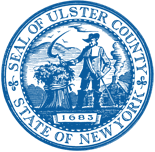Ulster County Housing Smart Communities Initiative
The Ulster County Housing Smart Communities Initiative (Housing Smart Communities) is a certification and capacity-building program that supports communities in meeting their housing needs. The program provides guidance, technical support, and incentives for local municipalities working to address their housing and affordability challenges.
How does the program work?
Ulster County communities choosing to participate in the program will begin a certification process to become a Housing Smart Community and be awarded a certification level (e.g., Bronze, Silver, Gold, Platinum) based on the number of Housing Smart Actions taken by the municipality. In turn, municipalities will receive support services and incentives from the Ulster County Planning Department to develop and adopt housing-related policies that address the community’s housing affordability challenges.
This program is one of five strategies included in the Ulster County Housing Action Plan which was adopted in 2021.
We have a dedicated website serving the initiative, here.
Housing Action Plan 2021
The Housing Action Plan starkly reveals just how hard so many in our community are struggling to make ends meet and the impacts of ever-increasing housing costs. The Plan carefully examines the data and trends associated with housing affordability and lays out the steps that decision-makers at all levels of government need to take to meet the housing affordability challenges. For the full report and individual municipal snapshots, go here.
The Plan shows how rising inequality and a failure to build the housing we need have produced an untenable situation for all but our highest-earning households. Nearly one-third of homeowners and more than half of Ulster County renters live in unaffordable homes.
Golden Hill Project
The Golden Hill project will unlock underutilized development potential, acting as a catalyst for meeting the housing goals outlined in the City of Kingston 2025 Comprehensive Plan and the Ulster County Comprehensive Plan as detailed in the 2005 Priority Strategies to Support Housing Development in Ulster County report and create a new neighborhood on the site of the Old Jail.
The new community will comprise approximately 160 new housing units designed for intergenerational occupancy. One-, two- and three-bedroom apartments will be available. Residents will enjoy an inviting community center, a fitness center, health service programming, open space, a playground, on-site parking, and connectors to the Empire State Trail network.
For More Information, please go to the Golden Hill Project Page - https://www.pennrose.com/apartments/new-york/golden-hill/
Ulster County Homeownership Program 2021
The New York State Housing Trust Fund Corporation awarded Ulster County $600,000 to assist low and moderate-income first-time homebuyers. Eligible activities in the Ulster County Homeownership Program include assistance with down payment and closing costs and post-closing rehabilitation. RUPCO and Ulster County start implementation in late 2021.
Ulster County Home Repair Program
The New York State Housing Trust Fund Corporation awarded Ulster County $800,000 to assist low and moderate-income households. The Program will focus on the replacement of vital home components such as roofs, correcting structural issues, mitigating health and safety issues, and improving the energy efficiency of owner-occupied, single-family homes. RUPCO and Ulster County start implementation in the spring of 2022.
Annual Rental Housing Survey
The Annual Rental Housing Survey presents basic data on the rental housing market in Ulster County. The survey provides information on vacancy rates and costs as reported by property owners. This information is used to track changes and trends and to provide guidance on affordability and demand. Three categories of housing units are included: Non-Subsidized Housing, Advertised Rental Housing, and Subsidized Housing.
Priority Strategies to Support Housing Development in Ulster County
Priority Strategies to Support Housing Development in Ulster County (“Strategies”) was adopted as an element of the County's Comprehensive Plan by resolution of the Ulster County Legislature on July 9, 2008. Strategies contain five (5) overarching recommendations:
- Undertake a “Full Court Press” Public Information-Education Campaign to Raise Public Official and Citizen Awareness About the importance of Housing Choice to the County's Economy and Livable Communities;
- Implement a Countywide “Housing-Friendly” Zoning Policy;
- Conduct a Feasibility Analysis of the Efficacy of Establishing a Community Housing Trust to Preserving Housing Affordability in the County;
- Develop Creative Approaches to Reward the County's Communities for Efficient Use and Expansion of Existing Regional Infrastructure to Support Higher Density Housing Development;
- Develop and Integrate a Comprehensive Set of County-Municipal Housing Targets Consistent with the Economic Development and “Smart Growth” Needs of the County and Individual Municipalities.
In arriving at the recommendations Strategies documents the increase in housing costs for both home ownership and rental units in relationship to growth in income utilizing a six (6) year data window from ending in 2004. Strategies also include information on barriers to housing development including nimbyism, and zoning densities that fail to take advantage of existing infrastructure.
Three-County Housing Needs Assessment
The Three-County Regional Housing Needs Assessment (RHNA), 2006 to 2020 was developed in response to the growing challenge of housing supply and costs within Dutchess, Orange, and Ulster Counties. The RHNA utilizes the base year of 2006 and forecasts housing needs for 2020. In addition, to the total number of housing units needed to meet a growing population and smaller household sizes, the Study provides an analysis of the need for affordable units by the municipality in each of the counties. This ‘gaps analysis” process required both economic and population forecasts that faced a substantive review by the steering committee in each county. The results are presented in a series of demographic and economic tables that establish both current needs and prospective needs, the latter providing the number of affordable units that would be needed in the future to ensure that the affordability gap did not grow. The Study represents a major collaborative effort between the counties to understand the regional housing needs and seek solutions cooperatively. Funding was generously provided by the Dyson Foundation.

